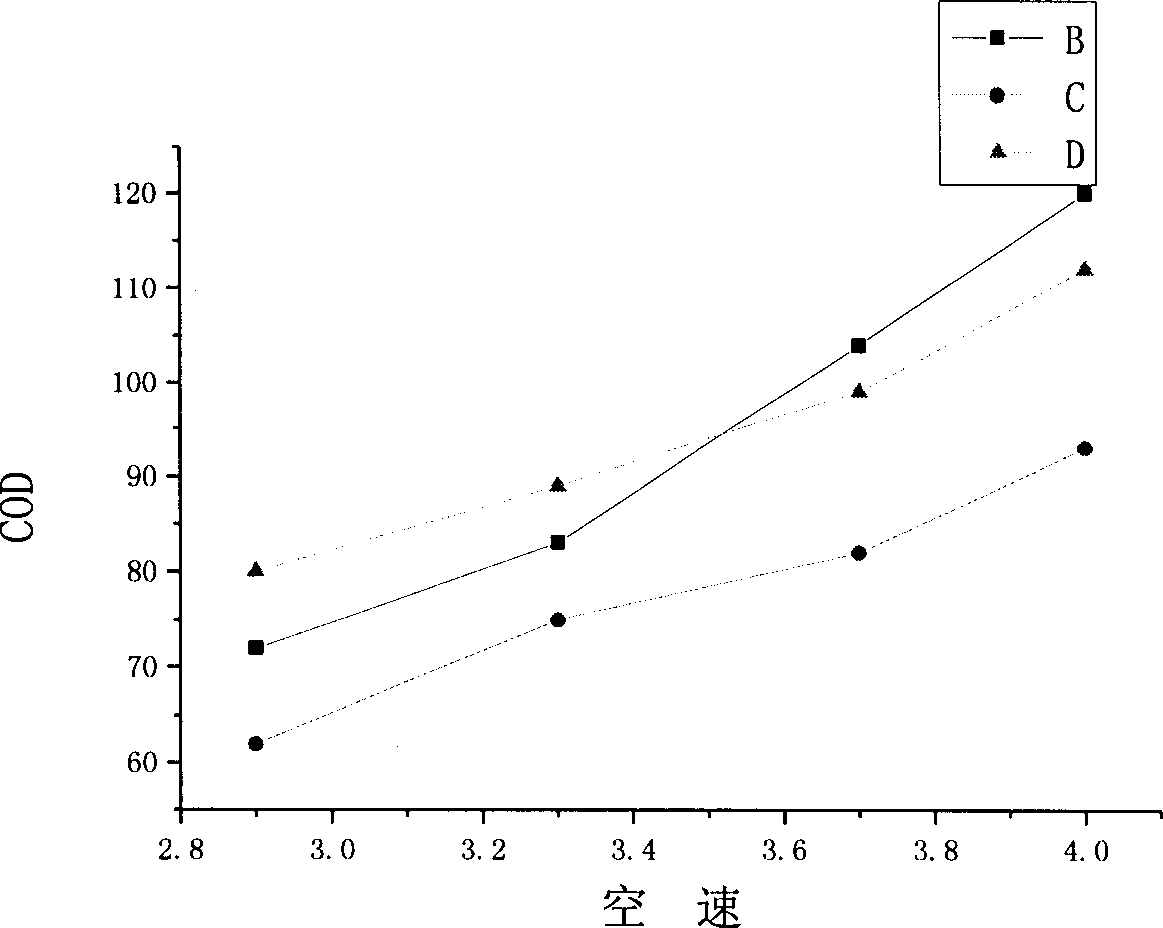Method of treating oil field waste water by electric-multiphase catalytic reaction and its special equipment
A technology for heterogeneous catalysis and oilfield wastewater, applied in electrochemical water/sewage treatment, chemical instruments and methods, water/sewage treatment, etc., to achieve mild reaction conditions, high treatment effect, and simple equipment
- Summary
- Abstract
- Description
- Claims
- Application Information
AI Technical Summary
Problems solved by technology
Method used
Image
Examples
Embodiment 1
[0019] M / SiO 2 Catalyst preparation:
[0020] Take 0.18mol / L of Fe(NO 3 ) 3 Solution 100ml, 100 grams of 40 ~ 60 mesh SiO 2 The particles were poured into the impregnating solution and stirred, left to stand for 10 hours, dried at 110°C for 2 hours, then calcined at 400°C for 3 hours, and naturally cooled to room temperature to prepare Catalyst A. The weight of metal components in catalyst A is: Fe: 1%, the rest is carrier SiO 2 .
Embodiment 2
[0022] M / Al 2 o 3 and preparation of M / zeolite catalyst:
[0023] Take Al 2 o 3 Or molecular sieve zeolite replaces SiO in embodiment 1 2 Particle, all the other are identical with embodiment 1, are prepared to contain Fe: 1% M / Al 2 o 3 Catalyst B or M / zeolite type catalyst C containing Fe: 1%.
Embodiment 3
[0025] Preparation of M / activated carbon catalyst:
[0026] ①Replace SiO in Example 1 with mesoporous activated carbon 2 Powder, and roasting under nitrogen atmosphere, all the other are identical with embodiment 1, are prepared into containing Fe: 1% M / activated carbon type catalyst D1.
[0027] ②Replace SiO in Example 1 with mesoporous activated carbon 2 Powder, and in the impregnating solution in embodiment 1, add the lanthanum nitrate solution 10ml of 0.18mol / L, and in N 2 Roasting under atmosphere, all the other conditions and steps are with embodiment 1. The M / activated carbon catalyst D2 was prepared as La0.2%-Fe1%.
PUM
 Login to View More
Login to View More Abstract
Description
Claims
Application Information
 Login to View More
Login to View More - R&D
- Intellectual Property
- Life Sciences
- Materials
- Tech Scout
- Unparalleled Data Quality
- Higher Quality Content
- 60% Fewer Hallucinations
Browse by: Latest US Patents, China's latest patents, Technical Efficacy Thesaurus, Application Domain, Technology Topic, Popular Technical Reports.
© 2025 PatSnap. All rights reserved.Legal|Privacy policy|Modern Slavery Act Transparency Statement|Sitemap|About US| Contact US: help@patsnap.com


